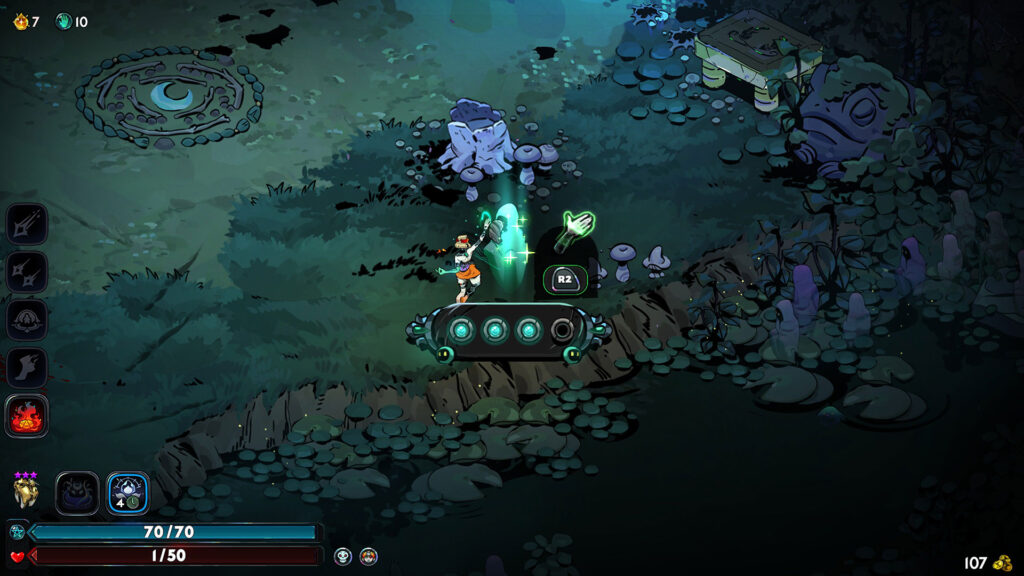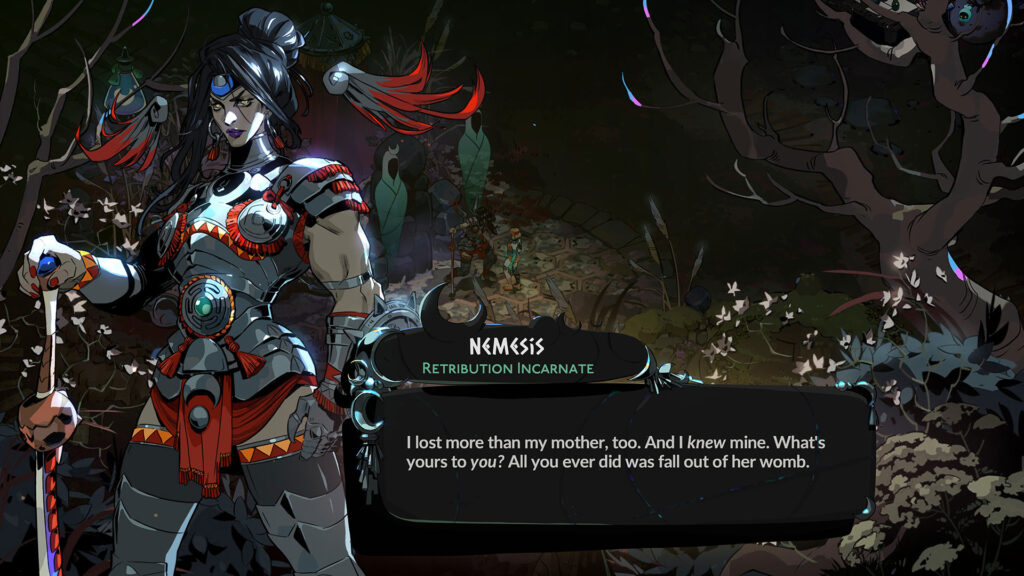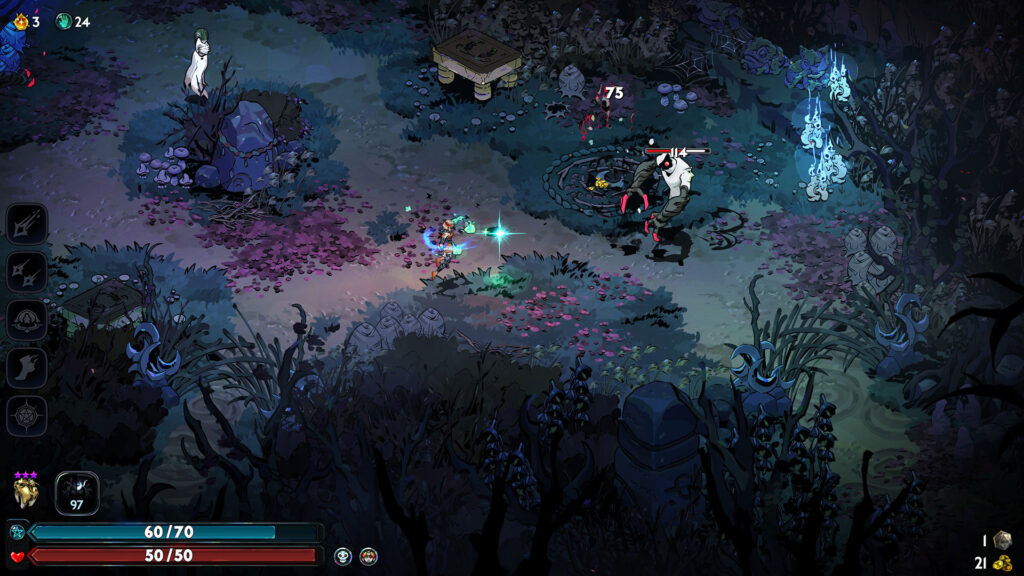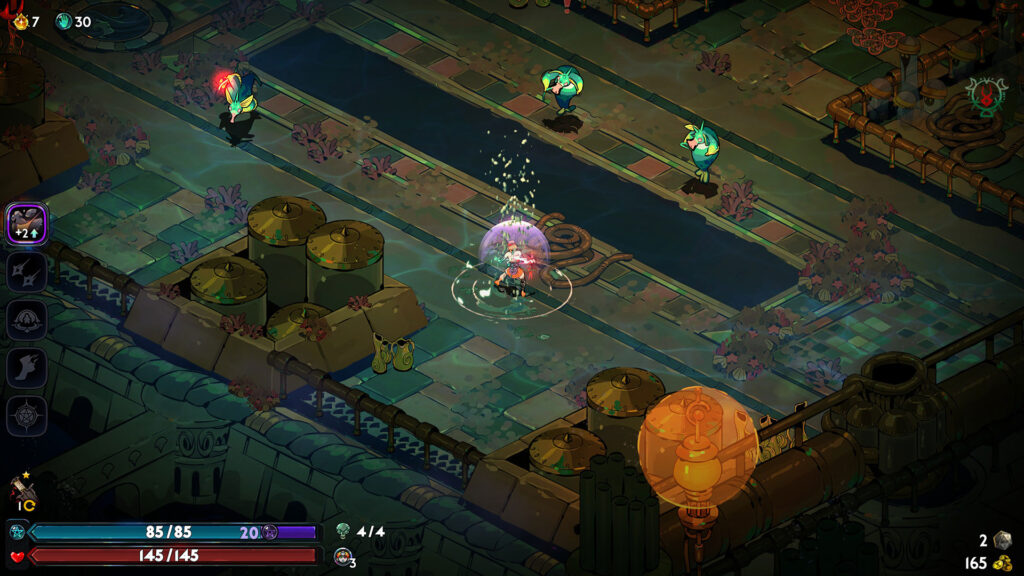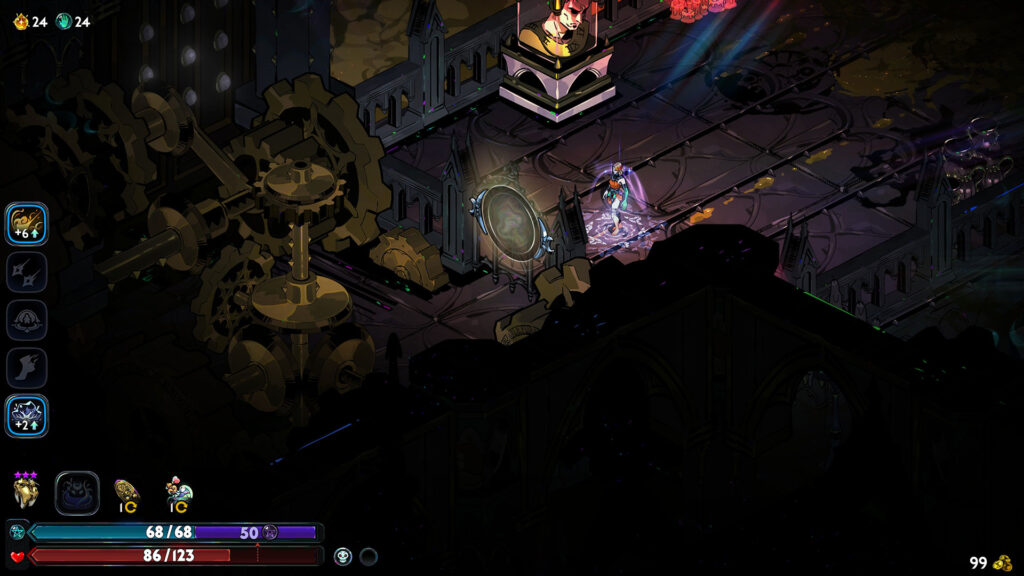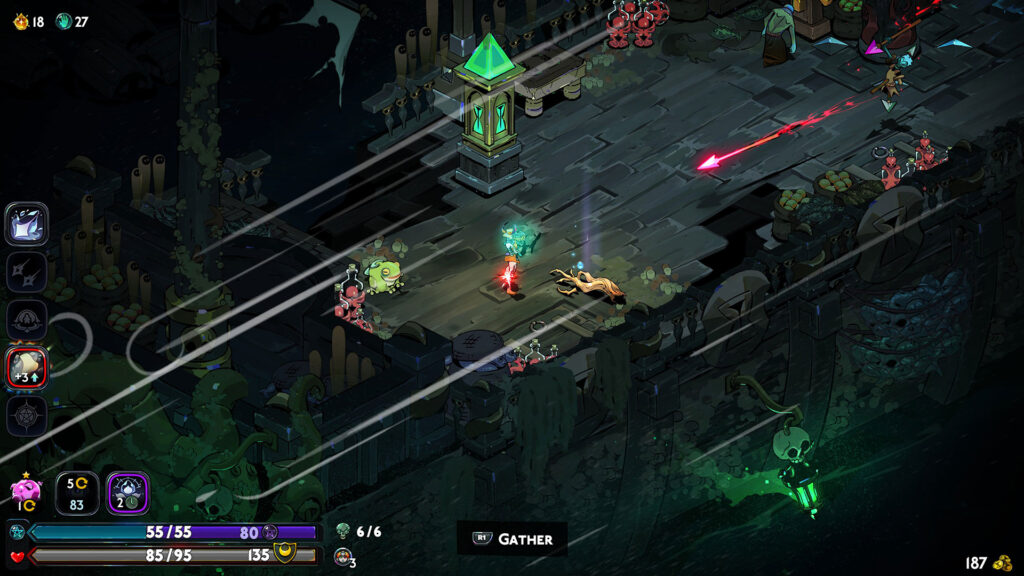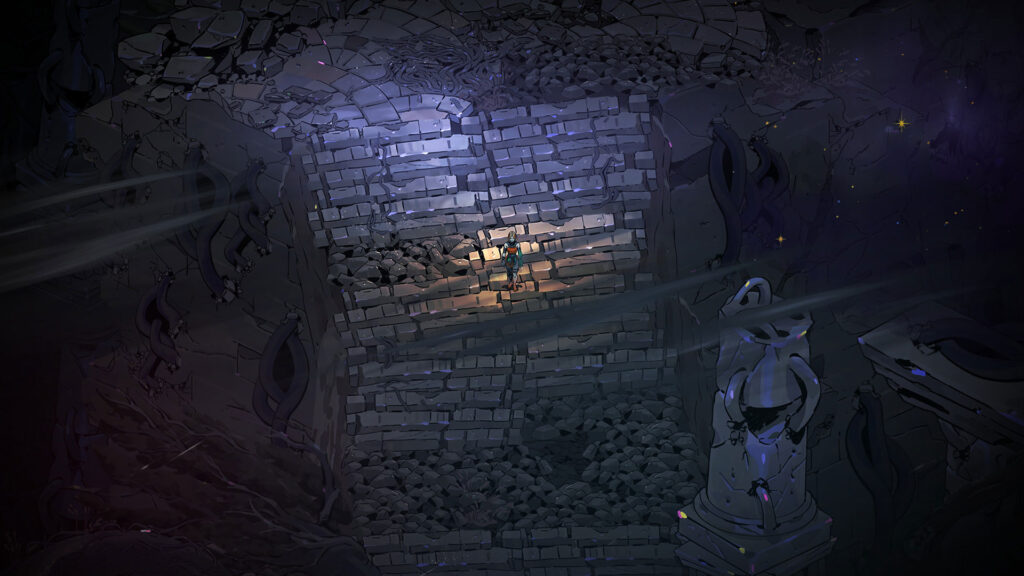Quick Verdict
I very much had a love-hate relationship with Hades II. There were moments of gameplay that were simply some of the best I’ve experienced all year, while other sequences of the game bored me so much that I went and played something else. My biggest issue with Hades II was how it handled player progression, as there were certain moments in the game when I expected to be rewarded with something, only to be given nothing. I also thought the number of mandatory runs to roll credits was a bit much, especially with the recent patch, which increased it even more.
When it comes to gameplay, though, there are very few games in existence that nail that feel as well as Hades II. It significantly improves on the entire Hades experience, with more versatility and movement in combat. I suppose it’s strange that the moment-to-moment gameplay felt so good, and yet, I wasn’t encouraged to do it for hours on end. As fun as the game is to play, that combat really did the heavy lifting to make up for the other flaws, including its surprisingly weak narrative.
Hex Appeal

As soon as I rolled credits in Hades II, I went and reinstalled the original Hades. I just needed to see if I misremembered a game that I had spent over 50 hours with, as I felt like Hades did a much better job keeping me hooked and chasing that next run. After all, Hades has been my favorite game to play on the Steam Deck, and even though the gameplay of Hades II is superior, I’m not quite sure I’m willing to swap the two out on my list. What really confused me during my Hades II playthrough was how unsatisfying player progression felt. It was especially weird to me because Hades arguably kicked off the trend of all the roguelites you see today. It did as good a job as any current game when it came to getting you to believe you were getting better each run.
When I revisited Hades, I started a fresh save just to ensure I wasn’t crazy. In Hades II, I found myself coming back to town plenty of times just to look around and leave again, with no fresh upgrades or unlocks to push my build forward. At least initially in Hades, you can spend Darkness to upgrade core stats, even if that’s just boring. The point is, even failed runs felt meaningful in Hades. The way the progression curve works in Hades II felt very much like a rollercoaster. Of course, this isn’t a major issue if you don’t mind the core gameplay loop and experimenting with different builds and weapons. For me, though, I liked the idea of getting access to new toys at a reasonable pace.
Considering how long it’s been since Hades II first entered Early Access, this review will have some light spoilers, so here’s your warning. The reason is that I can’t talk about my criticisms without spoiling some of how the game works, and I think that information is valuable for someone deciding whether or not Hades II is the right game for them. While there is plenty to love about it, some of these issues can’t be overlooked.
Killing Time

I spent about 10 hours with Hades II when it first entered Early Access and decided that I would wait until its full release to spend more time with the game. What I had seen already had me sold, as the combat felt night and day better than the original Hades. I believe that even more after going back to the first game, having spent another 30 hours with Hades II. If you’ve never played the original Hades, I highly recommend that you start there rather than jumping straight into Hades II. The game has aged well, and to me, is noticeably better when it comes to the main character and overall narrative.
To better explain the game, though, Hades II is very much a fast-paced action RPG. You control Melinoë, Princess of the Underworld, as she seeks revenge on Chronos. It’s a fairly generic plotline and you can poke some holes in it, especially since her drive for revenge revolves around a family she’s never really met. Nonetheless, the game plays out with a roguelite structure, where each run you choose a weapon and pick up Boons along the way, which is how you construct your build. There’s a degree of RNG so that every run feels distinct, even if the environment, enemies, and bosses are the same.
I found the weapon variety in Hades II to be vastly superior to the original Hades, and especially enjoyed the diversity it offers with some of the ranged weapons, as I typically prefer ranged over melee. General combat involves a basic attack, a special, a cast, and the ability to sprint. There are also omega (Ω) versions of each attack that involve holding down the corresponding button for it to charge. It may not sound like much on paper, but the frantic gameplay and how you use it all feels really well done.
Witch, Please

Meta progression comes in the form of Arcana Cards, which have a budgeting system and require resources gathered during runs as well as from killing bosses to unlock. Other permanent upgrades come from Incantations, some of which make subsequent runs a bit easier by adding a healing spot in certain areas, for example. You also get access to keepsakes, which are granted by gifting the various gods throughout the world. These keepsakes vary in effect, and eventually you unlock the ability to swap them out between levels. Later on, the game gives you ways to further enhance weapons and bring along a familiar, which is like a pet.
Now, there is an issue with combat depending on your playstyle and preferred weapon. I found myself largely ignoring special and cast attacks with my weapon of choice. This made things feel a bit bland, largely my own doing, and if I kept running into Boons that enhanced my special or cast attacks, I felt like the run was going to end in disappointment. Obviously, this is a me problem, and ideally you’d play Hades II in a way that lets you take advantage of what you’re offered, but I’m a stubborn person who finds something that works and sticks with it. If you’re like me, just know there will be moments of frustration when it seems like you’re not getting any Boons that fit your playstyle.
Despite my general unwillingness to use specials or casts, they still came in handy in certain situations. More importantly, though, their addition to the game really opens up combat compared to Hades in a good way. There are simply more tools at your disposal, and each weapon feels distinct with dozens of potential builds. The first 10 hours I spent with Hades II were pure bliss, as I experimented with the starting weapons to figure out which one fit my playstyle and slowly made my way through the levels, seeing the bosses.
Spell Check

As for the first light spoiler, Hades II is broken up into two main routes. At first, you need to conquer the Underworld path, starting in Erebus and ending in Tartarus, where Chronos now resides. Now, Hades II doesn’t hold your hand and isn’t explicit about what you have to do in the game in order to progress the story. What remains true with the sequel is the excellent writing and well-voiced dialogue from all of the characters throughout the experience, many of whom will drop subtle hints about what you need to do to progress. Apparently, my simple brain found those hints to be a bit too subtle, as it took me way too long to unlock the upper path.
Because of the way I approached the game, where I assumed I had to at least beat Chronos once before unlocking the upper path, the game started feeling a bit like a chore for me. Even worse, I started avoiding a certain area that is a prerequisite for unlocking the upper path. After piecing together all the clues, I realized my mistakes and finally gained access to the upper path. I’m mentioning this because I don’t feel like I’m the only one who spent more time than they had to before getting access to the final two weapons. When I did, though, I found my favorite weapon of the game and had a renewed sense of joy as I ventured through to the new area.
At a certain point, the game will show you the materials that are needed in order to complete it. After the recent patch, which added more story elements to help address common complaints with the game’s ending, the requirements are now eight total clears of the bottom path, and five total clears of the upper path. Considering how much post-game content there is, including an entire epilogue, I really don’t understand why Supergiant Games gated the ending of the game behind so many clears. I get it. One could argue that’s the whole point of the game, that you’re simply playing it and eventually you’ll get to the end. But instead of feeling like having a carrot dangled on a stick in front of me, I found myself thinking “ugh, I have to do this again.“
Clocked Out

To be fair to the game, much of this is my own fault, but I don’t think I’m the only one. Taking a look at the Steam achievements at the time of writing, 27.9 percent of the players have successfully cleared the upper path. However, only 19.5 percent of the players have completed the game to roll credits. I find that to be a pretty big drop-off, and I think it shows there are a good number of players who thought, “well, I don’t feel like doing that again over and over just to see the end of this story.”
One of the biggest moments that really lost me with Hades II was the first time I cleared the upper path. I returned to town looking forward to what I unlocked or got access to, and there was nothing. It may seem like a minor thing, but at that moment in time, I was shocked by how unsatisfying it felt. After obtaining this one material from conquering the upper path, the game simply said, “we won’t tell you what that does, just go again.” My next run did give me access to a new set of Boons, which was nice, but it’s still a huge disappointment that there’s nothing there in town. Moments like those, in a game like this, are where you encourage the player to jump straight into doing the same task they just did. Somehow, I found Hades II fails to hit those marks at its most important moments.
Truthfully, I had to force myself to finish Hades II in order to write the review. I don’t believe in reviewing a game unless I roll credits, but I wasn’t particularly encouraged to do any of the epilogue content or to experiment with the Fear system in its post-game content, which makes runs more difficult. Because of how many times I had to complete runs to roll credits, I felt I had seen enough, despite how fun the gameplay was. It’s a feeling that’s hard to describe because one would think if a game is fun to play, it’s more than enough to keep you playing it.
At the end of the day, I don’t regret the time I spent with Hades II. Many parts of the game are some of the best I’ve experienced all year, but I really felt it lost its luster rather quickly. Part of this is that the core is so similar to Hades, an issue I’ve had with many sequels that overall feel a bit safe. Like I said for Ghost of Yōtei, if you’re in the group who loved Hades and just wants more, you’ll get that with Hades II. Just know the overall narrative is weaker, and I didn’t find Melinoë as endearing as Zagreus. I also really would have loved to see different bosses at the end of each stage so it would feel less repetitive, but I understand why it’s designed the way it is. Even if Hades II never fully hooked me the way the original did, it is still an easy recommendation for anyone who wants another sharp, stylish run-based action game.
Hades II has an official release date of September 25, 2025, for Switch, Switch 2, and PC. This review is based on a purchased retail copy of the game on PC. While FullCleared does have affiliate partnerships, they do not influence our editorial content. We may earn a commission for purchases made through links on this page.


